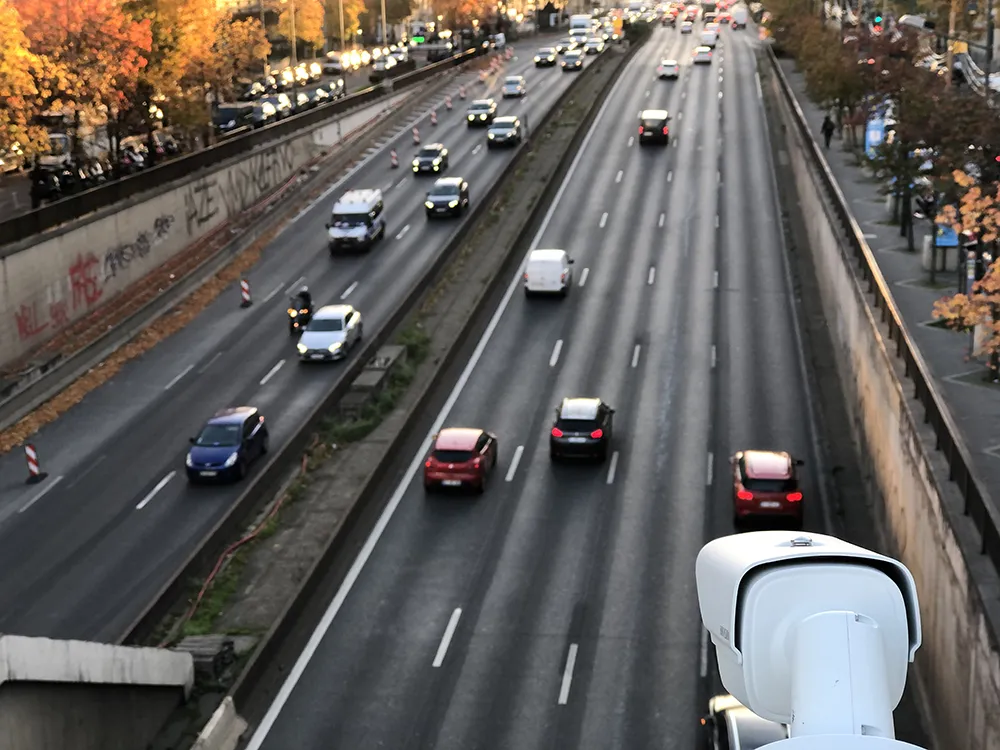
The city of Neuilly-Sur-Seine is home to Avenue Charles-de-Gaulle (RN13), an urban expressway which is frequented by around 130,000 vehicles per day - from small cars to large buses and trucks. The avenue serves as a connection from Paris to the business district of La Défense and is one of the busiest motorways in France. To get this avenue to keep on thriving, in 2019 the municipality started a major modernisation project called “Les Allées de Neuilly”.
Challenge: Traffic management for a busy urban expressway
Neuilly-Sur-Seine began a project in 2019 with the view of turning this urban expressway into an accessible, calm and welcoming boulevard lined with trees and walkways and pavilions to encourage soft mobility and local business development. Since the city is home to the headquarters of many businesses, the civil works of the project needs to be achieved without compromising on the road’s capacity for traffic flow in and through the city. Expected to finish in 2024, the project will result in a nice boulevard that guarantees transit capacity between Paris and La Défense for all types of mobility: vehicles, cyclists and pedestrians.
The project requires rearranging the 10 hectares that Avenue Charles-de-Gaulle occupies. Reconstructing such an infrastructure is no easy feat, and getting it right is key to the everyday functioning of the city in the future. It is also important that whilst the project is underway, the routes and traffic aren’t entirely disrupted. To adequately plan for traffic diversions and the potential impact this could have on daily commuters, the potential adverse effects to motorists and their safety need to be measured, and for this reliable traffic data is needed. This is where Wintics came in. Wintics is a Hikvision technology partner that uses artificial intelligence (AI) to turn video stream into insightful data with the vision “to make mobility a safer, more reliable and more sustainable experience”.
Solution: Hikvision’s thermal cameras integrated with traffic analysis software
Wintics Cityvision software installed at Neuilly analyses video stream from five Hikvision thermal cameras. Cityvision uses AI to measure, analyse and visualise traffic data from the boulevard to assist in measuring the state and type of traffic as well as how and when people use the 10 traffic lanes. Once the project is complete, the installation will also assist the city in monitoring traffic to measure its positive impact and changes in travel methods.
To ensure the maximum reliability of its software, Wintics requires cameras to match specific operational needs to connect to Cityvision. This is where Hikvision cameras contributed to the solution. In May 2020, Wintics chose Hikvision thermal cameras (DS-2TD2136) to integrate with its own software to film the traffic lanes, which then feeds into the Wintics’ system, which can differentiate between cars, motorbikes, buses and other vehicles, producing real-time data with more than 90% accuracy.
Wintics used Hikvision cameras for several reasons. Firstly, Hikvision had the perfect balance between competitiveness and quality on the market as the company offers reliable and consistent products. In fact, Wintics usually defers to Hikvision cameras for its installations. Secondly, the company opted for thermal rather than optical cameras for this case because thermal cameras solve a very common problem for optical cameras capturing traffic images – glare! Optical cameras may capture the glare from oncoming headlights, and strong sunshine, resulting in an obscured image, which in turn can obscure the data and analysis. Thermal cameras on the other hand don’t capture light at all, only heat – ruling out the possibility of glare obstructing the camera’s function.
Thermal cameras also have an edge for potential GDPR issues. Since only the vehicle is recorded, the faces of drivers and their licence plates are indecipherable. Where privacy is concerned, erring on the side of caution is made easier by using thermal cameras. Another plus to using thermal cameras is that they generally require less bandwidth to operate than optical cameras, making them an ideal solution if bandwidth is a potential constraint to effective operation.
Result: Accurate vehicle counting and classification
Quentin Barenne, co-founder of Wintics says: “We’ve audited the whole system, and it resulted in over 90% accuracy - not only for counting the vehicles, but also in classifying them into different categories. By integrating Hikvision’s thermal cameras with our own AI application, I can now confidently discuss next steps for improving the safety of the road.”
This installation is just one example of how Hikvision products can be easily and effectively integrated for various needs, creating intelligent, flexible solutions for many challenges – getting the most out of technology.
Content produced in association with Hikvision










